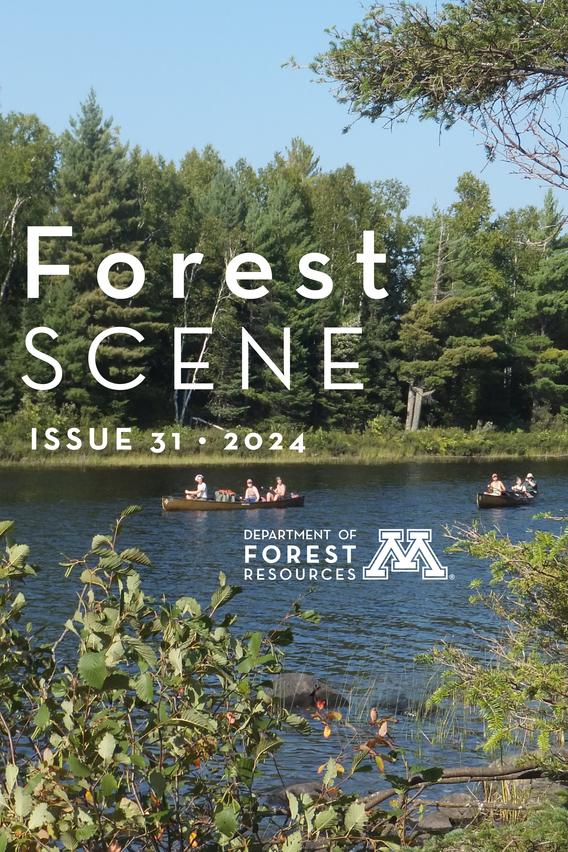This article is part of the Forest Scene newsletter, Issue 31.

After a hiatus caused by the COVID-19 pandemic, people once again gathered at the Long Lake Conservation Center in Minnesota for a weekend of phenology organized by Professor Rebecca Montgomery’s lab.
Held in March, the 2024 MN Phenology Gathering was “a true meeting of the minds,” as one attendee put it. “With about 25% formal teachers, 25% informal educators (from Nature Centers and Educational Learning Centers), 20% scientists, and 30% Committed Community Scientists, we find real strengths in our different perspectives,” they continued.
The Gathering featured a broad mix of phenology-related activities, including nature walks, stargazing, storytelling, art making, seed collecting, and lightning talks and presentations on topics ranging from phenology in the classroom to the 13- and 17-year-cycle cicada emergence. Keynotes were presented by Jake Grossman, UMN Assistant Professor of Biology and Environmental Studies, and Josh Leonard of Belwin Outdoor Science, an outdoor environmental education center for St. Paul Public Schools.
“Phenology is a fantastic pathway into learning about and appreciating nature,” says UMN Extension Specialist Eli Sagor, who manages the Sustainable Forests Education Cooperative and presented at the Gathering. “To observe seasonal changes, we need to slow down and focus our attention on what's happening right now. When we do that, we find wonder in the moments and spaces that on another day, we might have rushed past.”
Despite the weekend’s packed schedule, its purpose – advancing phenology – required everyone to slow down and focus on the now. That nurtured an overall experience one attendee described as “stimulating and educational while also feeling restorative.”
Yet the Gathering wasn’t just about experiencing the wonder of the natural world – it was also about sharing data. “Sharing observations helps to build a dataset that researchers desperately need to understand what is changing, where it's changing, and how those changes influence one another,“ Sagor says.
The Minnesota Environment and Natural Resources Trust Fund provided funding for this project as recommended by the Legislative-Citizen Commission on Minnesota Resources (LCCMR).

The Forest Scene newsletter is published biannually in the spring and fall, featuring stories and updates from the Department of Forest Resources. Read Issue 31 (2024):
- Department Message from Kristen C. Nelson
- Recommended Reading
- UMN-Twin Cities Designated as Tree Campus in Higher Education
- Faculty Retirement: Andy David
- Prions in MN Waterways: Discovery Helps Water Managers Plan
- Supporting Sustainable Agroforestry in Guatemala
- Graduate Research Highlight: Luiza Lucena
- News Bites:
- From Our Archives
- In Remembrance
